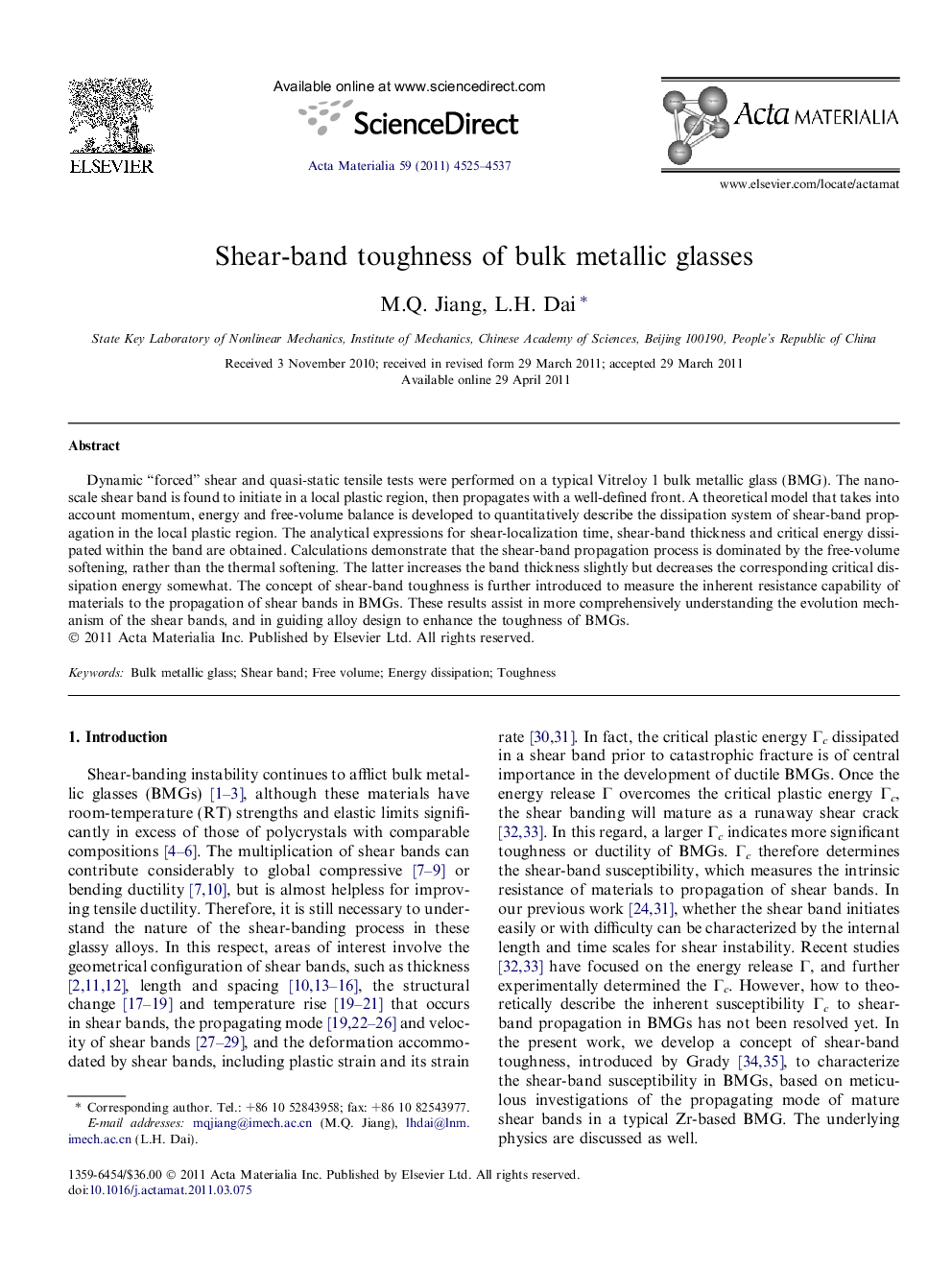| Article ID | Journal | Published Year | Pages | File Type |
|---|---|---|---|---|
| 1447031 | Acta Materialia | 2011 | 13 Pages |
Dynamic “forced” shear and quasi-static tensile tests were performed on a typical Vitreloy 1 bulk metallic glass (BMG). The nanoscale shear band is found to initiate in a local plastic region, then propagates with a well-defined front. A theoretical model that takes into account momentum, energy and free-volume balance is developed to quantitatively describe the dissipation system of shear-band propagation in the local plastic region. The analytical expressions for shear-localization time, shear-band thickness and critical energy dissipated within the band are obtained. Calculations demonstrate that the shear-band propagation process is dominated by the free-volume softening, rather than the thermal softening. The latter increases the band thickness slightly but decreases the corresponding critical dissipation energy somewhat. The concept of shear-band toughness is further introduced to measure the inherent resistance capability of materials to the propagation of shear bands in BMGs. These results assist in more comprehensively understanding the evolution mechanism of the shear bands, and in guiding alloy design to enhance the toughness of BMGs.
